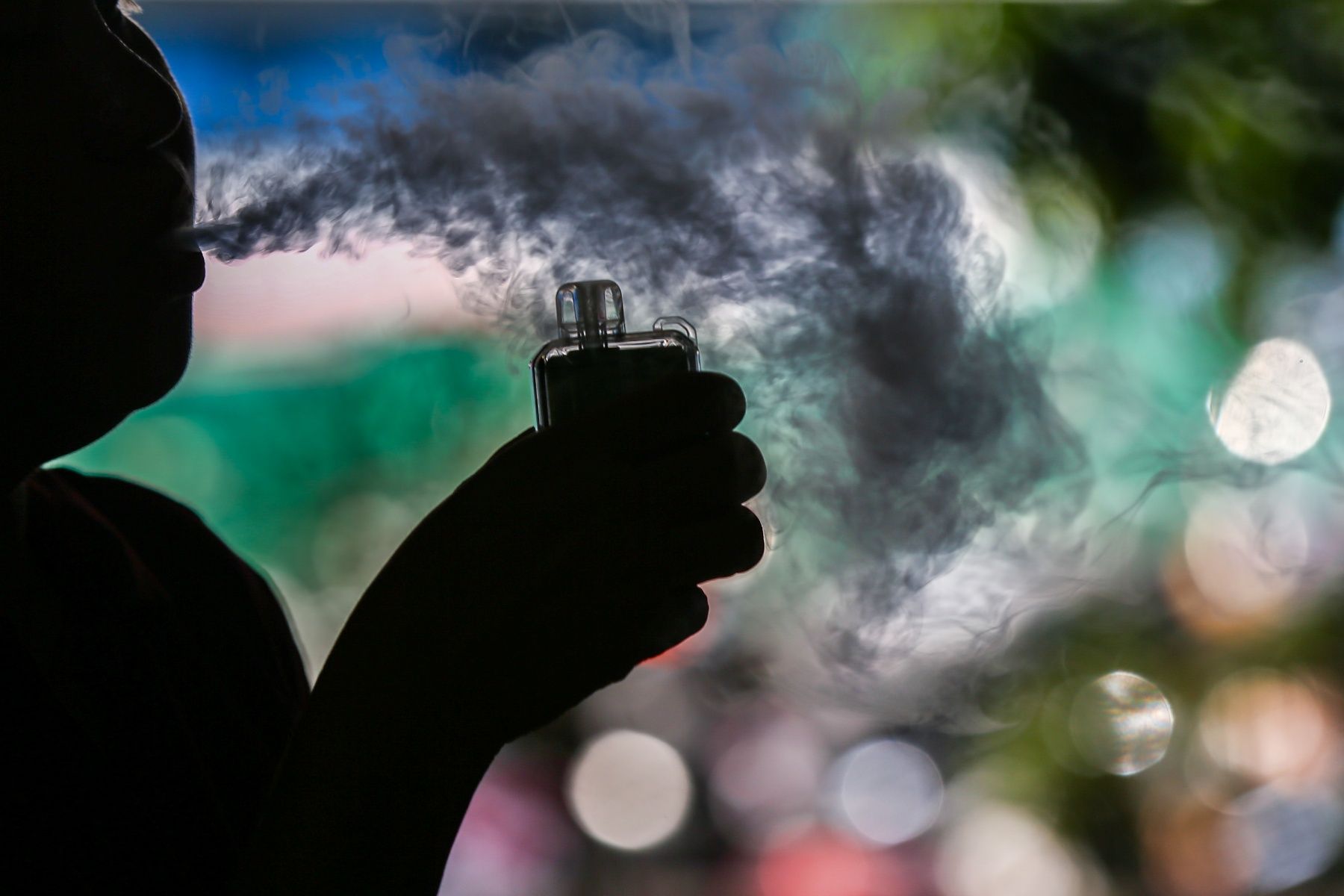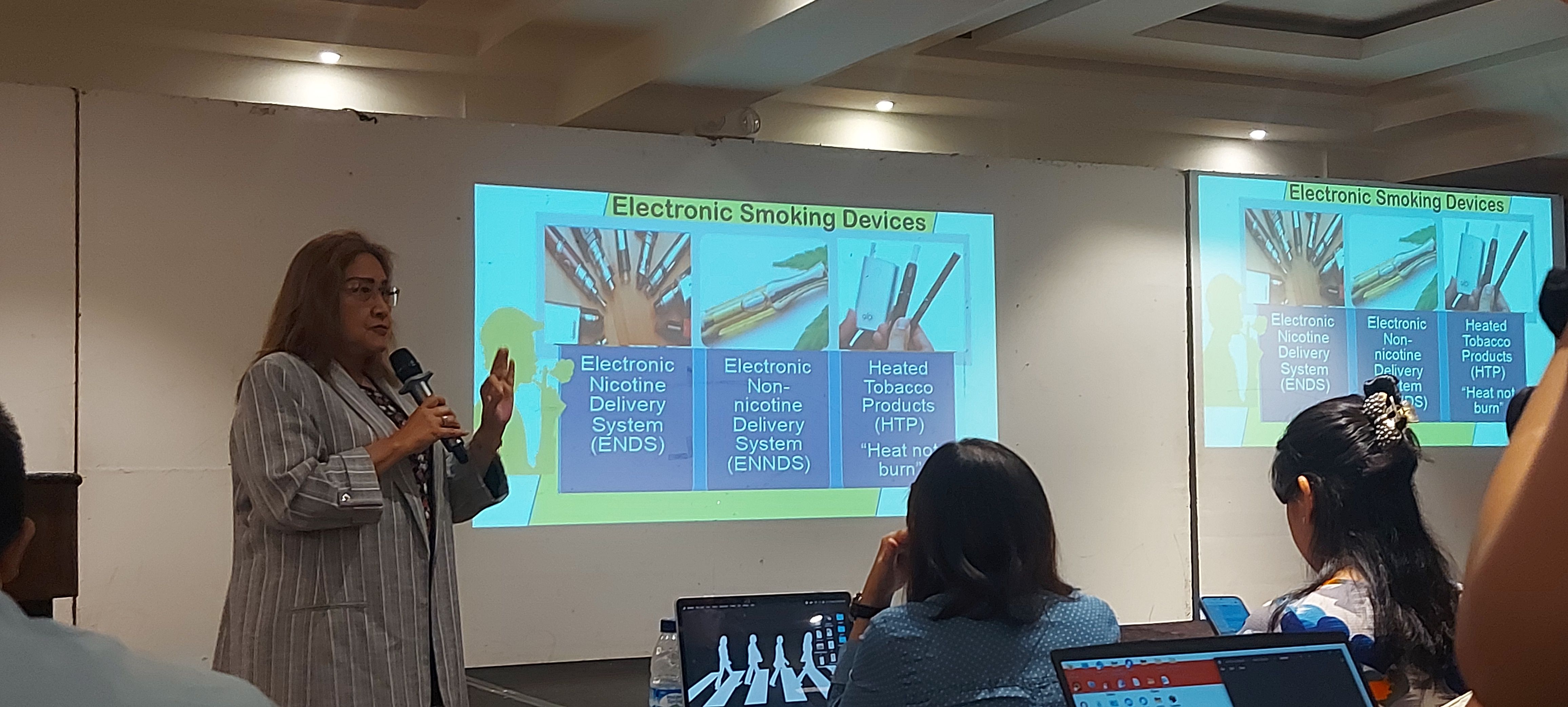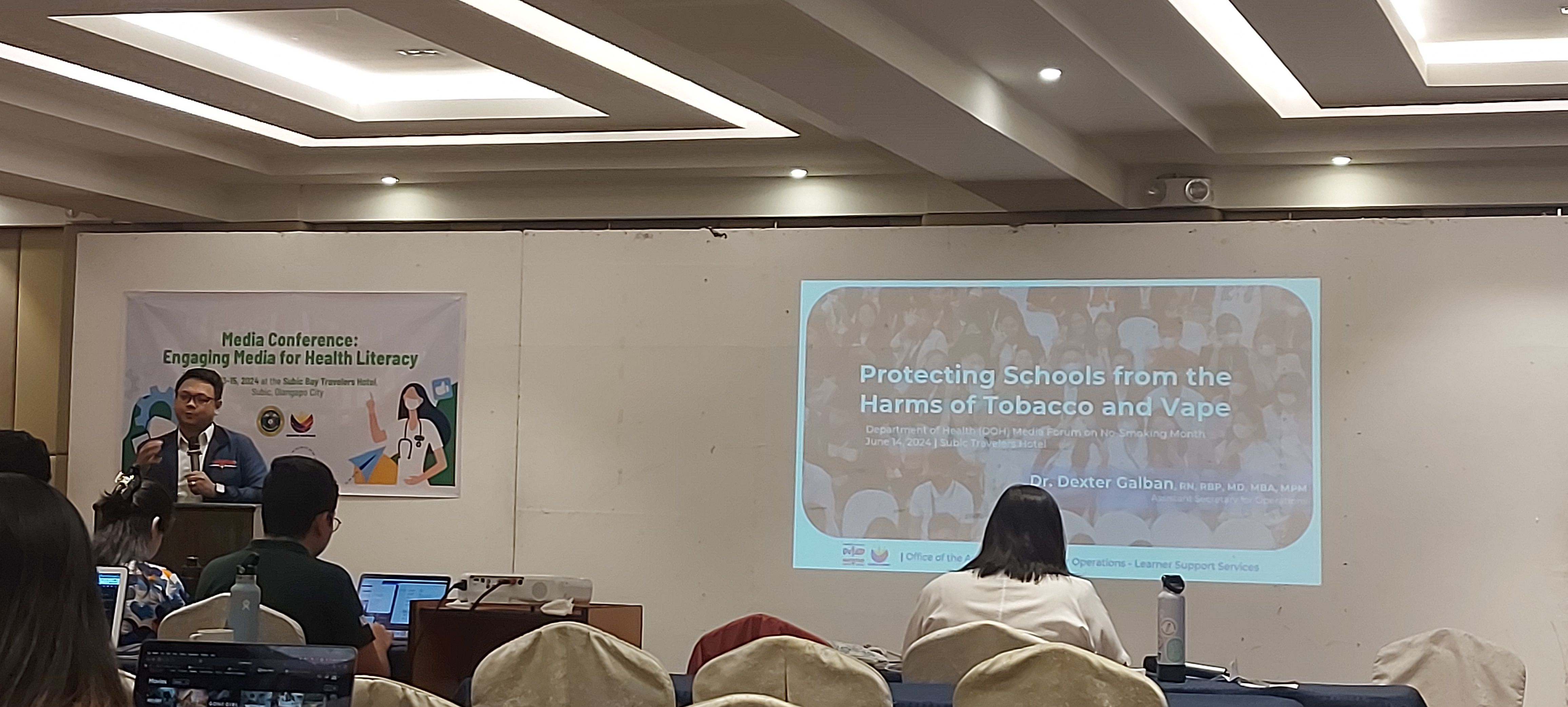'Don't fool yourself': Expert warns vaping is not safe, just as harmful as smoking
SUBIC, Zambales — An expert on Friday, June 14, debunked a “myth” about vaping and its reputation as a “safer alternative” to smoking, noting that it has now become a growing public health concern.

“Vaping is not a harmless activity,” Dr. Maria Encarnita Blanco-Limpin of the Philippine College of Chest Physicians and the Philippine Medical Association said during the second day of the “Engaging Media for Health Literacy” conference.
Limpin discussed the health harms of vaping and how it is as “equally harmful” as smoking since it contains “toxic substances” just like traditional cigarettes.
Vaping, marketed as a "better" alternative to smoking, is “not true,” Limpin said, noting that there is “definitely an increased harm” in using vape products.
“Do not make any mistake in thinking [that vaping is safer compared to traditional smoking] because you will still be able to inhale the chemicals,” she added.
What you need to know
In the Philippines, Limpin said the available electronic smoking devices include the Electronic Nicotine Delivery System (ENDS), Electronic Non-Nicotine Delivery System (ENNDS), and Heated Tobacco Products (HTP).
Vaping, which falls under ENDS, involves inhaling and exhaling an aerosol produced by an e-cigarette or similar device. Unlike traditional cigarettes, vape products are quite popular and appealing, especially to young people, because they come in various flavors and enticing packages.

“We have a rapidly changing landscape with e-cigarettes and other nicotine delivery devices,” Limpin said, noting the “rapid rise” in the use of e-cigarettes, especially among the younger population or teens.
Aside from sounding the alarm on the prevalence of vaping among the youth, Limpin said that people in the medical profession are “very worried” because a large percentage, 44 percent, of those who are using vape products are found to be “non-smokers.”
Vaping is not ‘less harmful’
Limpin cautioned users of vape products about the potential impact of vaping on their health.
“We cannot trust what we see on the label of the e-cigarette product,” Limpin said, noting that thousands of harmful chemicals are found in them.
Limpin also clarified that contrary to claims that vaping releases vapor, it releases aerosol. “It is not true that the smoke you see created with vaping is vapor — it is aerosol,” she said.
While others believe that vaping is “less harmful” than traditional smoking, Limpin stressed that the “smoke created by cigarettes is the same as that created by vape products — it’s dangerous.”

For physicians like her and those in the health community, Limpin noted that as long as there is a “signal” for harm, “we will not recommend the use of such products.”
Vape products, just like traditional cigarettes, she said, contain chemicals known to be “toxic and carcinogenic” materials. “Definitely, they are not safer and not less harmful,” she added.
Health harms of vaping
Among the immediate health risks of vaping, Limpin said, are issues in the respiratory system.
Vaping can irritate the airways, leading to symptoms like coughing and shortness of breath. It can also lead to cardiovascular problems and chronic respiratory diseases.
The Philippines, Limpin said, also recorded its first vape-related death. A 22-year-old male died of EVALI (E-cigarette or Vaping Product Use-Associated Lung Injury).
The patient, with no known comorbidities but who had two years of vape use, complained of the sudden onset of chest pains. His work-up results also showed elevated cardiac markers and myocardial infarction, or heart attack.
Aside from EVALI, Limpin noted that vaping can also lead to nicotine addiction as many e-liquids contain nicotine, which is highly addictive.
Vapers are also expected to develop cancers and kidney problems in the long run. “It is just a matter of time,” Limpin said. “If the smoker of cigarettes can have these diseases, the vape user can also develop these because the same chemicals are present,” she added.
Just stop smoking
As emerging evidence suggests that vaping poses significant health risks, Limpin underscored the importance of understanding that the idea that vaping is a "safe" alternative to smoking is a “misconception.”
Limpin noted that vaping is not a “risk-free alternative” to smoking as it carries immediate and long-term health risks that should not be overlooked.
For those who are considering the use of vapes as an alternative to quitting smoking, Limpin advised seeking “safer” methods backed by reliable studies.
“Don’t fool yourself, just stop smoking,” Limpin told those who want to quit smoking and are planning to use vaping as an alternative.
While it is very challenging to make people quit smoking, Limpin said: “We will not really suggest the use of vaping even to those who want to stop smoking because you are not reducing the risk but increasing the continuing high risk of developing diseases.”
“We’re sounding the alarm for people to already stop vaping before it’s too late,” she added.
DOH initiative
Organized by the DOH Promotion Bureau, the three-day activity is part of a series of media conferences this year to orient media practitioners nationwide on the current thrusts of the DOH, including its 8-Point Action Plan, priority disease prevention and control programs, as well as current health issues and concerns.
The conference also aims to familiarize participants with health concepts and terminologies for common understanding, correct usage, and fair and balanced reporting.
Other resource persons include Pia Rodrigo from the Action for Economic Reforms, who discussed sin tax and illicit trade, and Samantha Joan Ackary from the Ateneo School of Government, who presented studies on vape and tobacco flavors in the Philippines.

Department of Education (DepEd) Assistant Secretary for Operations Dr. Dexter Galban and Salome Zoleta of the Metropolitan Manila Development Authority (MMDA) talked about protecting schools and communities from the harms of tobacco and vaping.
Disease and Prevention Control Bureau Medical Officer Dr. Ronaldo Quintana discussed the DOH Smoking Cessation Program, while Dr. Jessica Catalan-Legarda of the Lung Center of the Philippines explained what “Quitline 1558” is all about.
Lawyer Irene Reyes from the Southeast Asia Tobacco Control Alliance tackled how to safeguard public health from industry interference, while Tanya Hamada from the Campaign for Tobacco-Free Kids and Dr. Madeleine de Rosas-Valera of Vital Strategies explained the importance of fostering multisectoral collaboration.
